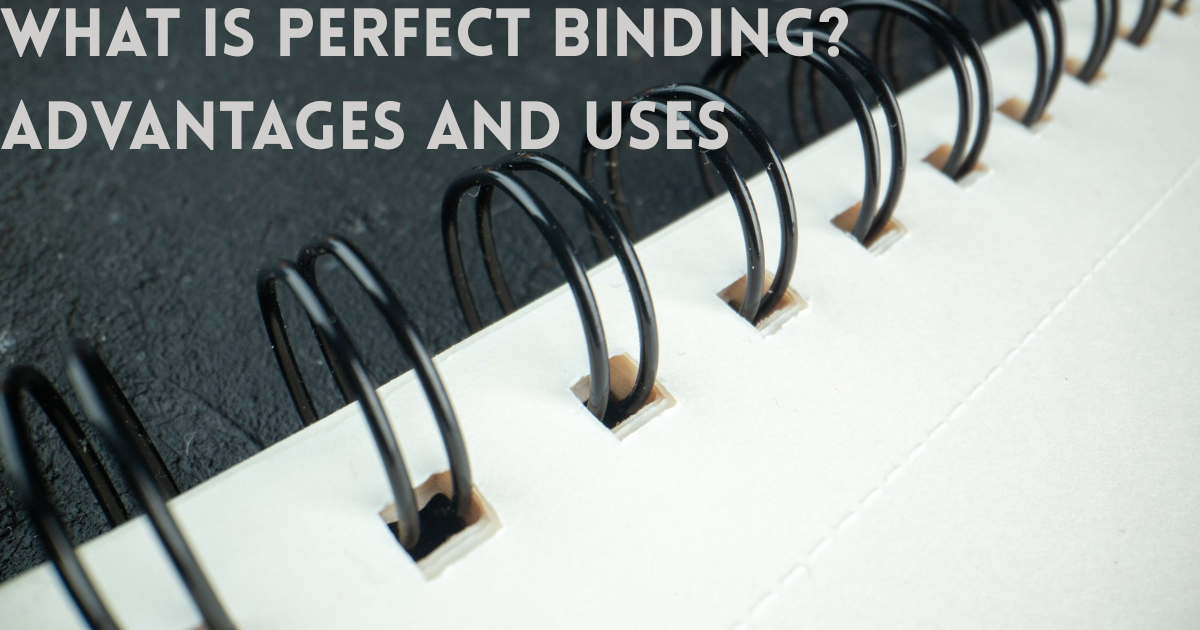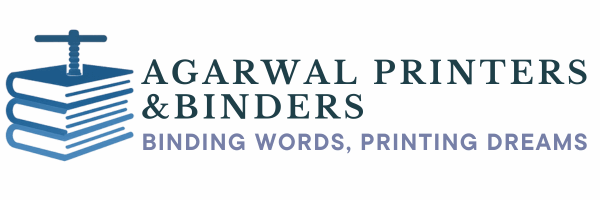
When you pick up a paperback novel at the bookstore or flip through a stylish catalog, chances are you’re holding a perfect bound book.
Perfect binding is one of the most widely used book binding methods in the world, and for good reason. It’s versatile, cost-effective, and delivers that clean, professional finish most authors and businesses want.
So what exactly is perfect binding and is it the right choice for your book? Let’s dive in.
What is Perfect Binding?
Perfect binding is a book binding technique where the pages of your book are gathered into a block, the edges are trimmed so they’re “perfectly” even, and then the block is glued to a wrap-around cover using a strong, flexible thermal adhesive.
Finally, the book is trimmed on the other three sides for a smooth, square edge and a neat, sharp look. This book binding process gives your book a flat, square spine, which can be printed with the title, author’s name, or your brand logo.
Advantages of Perfect Binding
- Professional Look:
Perfect binding gives your book a sleek, polished appearance-ideal for bookstores, libraries, or impressing clients. The squared-off spine makes it look substantial and well-finished. - Allows Spine Printing:
Unlike spiral or saddle stitch book binding, perfect bound books have a flat spine where you can print your title or graphics. This is especially important for books stacked on shelves. - Cost-Effective for Larger Projects:
It’s generally more affordable than hardcover (case binding) and works well for medium to high page counts, making it perfect for most paperbacks, annual reports, and magazines.
Check out our guide on Print on Demand vs Bulk Printing to plan your print runs efficiently.
- Durable for Everyday Use:
While not as robust as case binding, perfect bound books hold up well under normal use. Modern adhesives are very strong and flexible, reducing the risk of pages falling out, a reliable book binding method for normal use. - Streamlined for Mailing & Storage:
Because perfect bound books stack nicely and have a uniform shape, they’re easier to ship and store in bulk.
Common Uses of Perfect Binding in Book Binding
Perfect binding is incredibly versatile. At Agarwal Printers & Binders, we recommend it for:
- Novels & Non-Fiction Books:
Most paperbacks you find at a bookstore use this book binding style. It’s the classic choice. - Business Reports & Corporate Publications:
Annual reports, company profiles, or investment presentations look more professional with a square spine. - Catalogs & Lookbooks:
Product catalogs and brand lookbooks benefit from the clean lines and easy spine labeling. - Magazines & Journals:
Perfect binding is popular for thicker, high-quality magazines and academic journals. - Manuals & Guides:
When you want an instruction manual that’s more substantial than a simple stapled booklet.
Is Perfect Binding the Right Book Binding Choice for Your Project?
While perfect binding is a fantastic choice for many books, it’s best suited to:
- Books with at least 50 pages (thinner books may not have a wide enough spine to hold the glue well).
- Projects where a polished, professional appearance matters.
- Books where laying completely flat isn’t critical. (If flat opening is important for example, for recipe books or technical manuals, you might consider spiral or wire-o binding instead.)
Let’s Bring Your Book to Life
At Agarwal Printers & Binders, we’ve produced thousands of perfect bound books using expert book binding techniques for authors, publishers, schools, and businesses. We’ll guide you through choosing the right paper, designing your spine, and adding finishing touches like matte lamination or spot UV to make your book stand out.
📞 Thinking about printing your book?
Contact us today for a free consultation or a sample quote. We’d love to help you create a book that looks as amazing as it reads.

